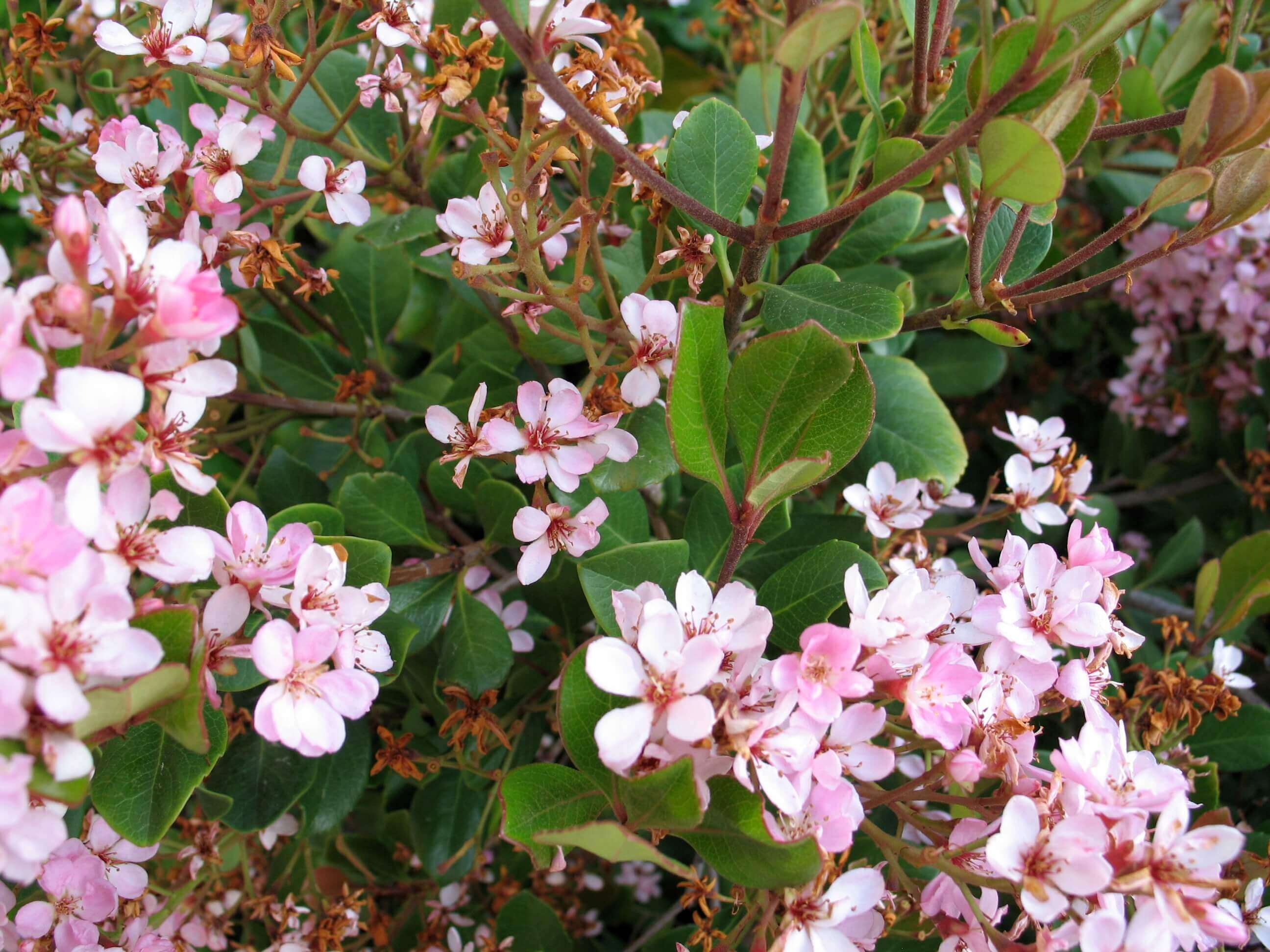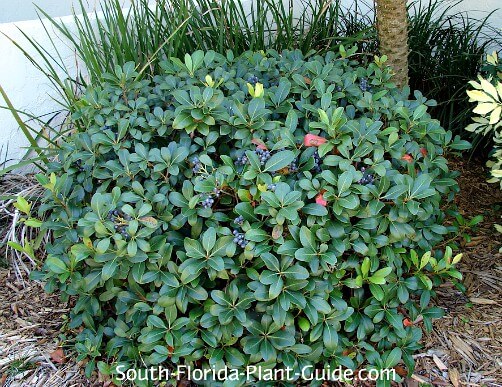

This plant has been used in Japan for over 400 years in a technique for making pongo silk fabrics. The plant is also known as "teechigi" and its pulp is known as "sharinbai" (しゃりんばい / テーチ木 / テカチ木) in Japan and a dark brown dye is made by boiling its dried bark or root and using iron or lime water as a mordant. It has been successfully pruned into a standard form as well as small dwarf-like trees up to 15 feet in height. Often it is trimmed into small compact hedges or balls for foundation plants. It is often found in commercial as well as in private landscapes. Indian hawthorn is a mainstay horticultural specimen in southern United States. The fruit is edible when cooked, and can be used to make jam. It is grown for its decorative pink or white flowers, and is popular in bonsai culture. It is found on slopes, roadsides, bushes on the sides of streams at an altitude of 700–1600 meters above sea level in an areas such as, southern China, Japan, Laos, Cambodia, Thailand and Vietnam. Stamens 15, as long or shorter than the petals. The petals white or pink, obovate or lanceolate, 5–7 × 4–5 mm, pubescent basal, obtuse apex. The inflorescences in panicles or terminal of clusters, with many or few flowers pedicels and peduncles rusty-tomentose bracts and deciduous bracteoles. Petiole 0.5–1.8 cm or almost absent, slightly brown or tomentose, subglabrous stipules deciduous, lanceolate, little brown tomentose, acuminate apex ovate blade blade, oblong, rarely obovate, oblong-lanceolate, narrowly elliptical or elliptical-lanceolate, (2–) 4–8 × 1.5–4 cm, coriaceous, abaxially prominent veins, abaxially visible reticular veins and visible or non-adaxially, back pale, glabrous or scarcely tomentose, shiny adaxially, glabrous, the apex obtuse, acute acuminate. The branches are purple brown when young, greyish brown when old, cylindrical, initially brown tomentose, glabrous in old age. Alternatively take semi-ripe cuttings during late summer (when the new growth has become firm).They are shrubs or small trees, which rarely reach a size of 4 m in height. May be grown from seed but seedlings can be difficult to raise. Plants, particularly named cultivars, are readily available at garden centres, with prices varying according to plant size. Tip: To keep your shrub even more compact pinch out the tips each year immediately after flowering. Prefers a well-drained fertile soil but will tolerate poorer conditions provided soil is watered in summer.įlowers mainly in spring but flowers seen at other times of the year including autumn. Salt tolerant, so useful for a coastal garden Growing requirements:įull sun except in extremely hot climates where it prefers a semi-shaded position.įrost hardy during winter season (will tolerate temperatures to -10deg.C). For best flower colour or for a compact plant, look for named varieties such as ‘Ballerina’. Blue-black berries appear on the shrub after flowering. The five-petalled flowers are sweetly perfumed. The Indian hawthorn is normally a low growing shrub with mid-green, slightly serrated leathery leaves. It thrives as far north as Brisbane in the subtropics.ĭescription: It is a dense, evergreen shrub or small tree (usually 2-3m or 6-10′ tall), with flower colours ranging from white to deep pink. Also suited to use in a pot or as a low hedge.īest climate (see climate map): The Indian hawthorn comes from Southern China (not India as its name suggests) and grows in all but the hottest and driest parts of Australia. This shrub is covered with rich pink flowers from early spring until autumn. ‘Enchantress’ – compact shrub with bronze green foliage.‘Springtime’ – vigorous cultivar with rose pink flowers.A good choice for a potted shrub or a low growing border or hedge. ‘Ballerina’ – grows only 60cm (2′) tall with white or pink flowers.Seek a named cultivar if a compact shrub is needed. Cultivars: There are many named cultivars.Several other species are also known in cultivation including R. This plant is a member of the rose family, Rosaceae. The name refers to slender bracts at the base of each flower. The name is derived from two Greek words, ‘rhapis’ meaning ‘a needle’ and ‘lepis’ which means ‘a scale’. The genus name is Rhaphiolep is, not Raphiolep sis. A common error with this plant is the mispronunciation of its name. Detailsīotanical name: Rhaphiolepis indica (also spelt as Raphiolepis ).

Indian hawthorn is more usually seen as a small, flowering shrub around 2m (6′) tall. This specimen, from Wallsend on the central coast of New South Wales, was an extremely old plant which had developed a tree-like size and spread. He issued the challenge to find a larger one.

Recently on the show Don featured an enormous Indian Hawthorn (about 5m or 15′ tall). Indian Hawthorn – Qantas Amazing Australia


 0 kommentar(er)
0 kommentar(er)
